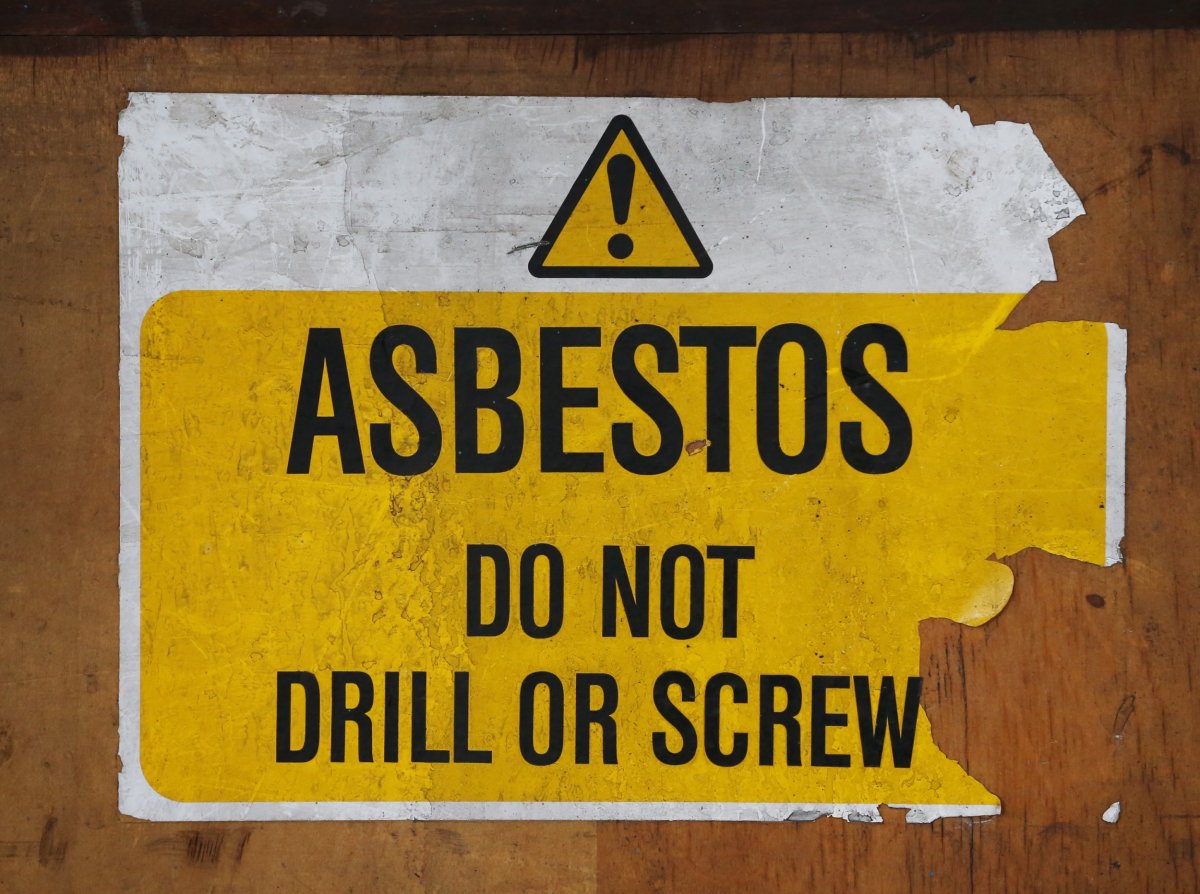The Trump administration's Environmental Protection Agency appears to have blamed the Obama administration for failing to put regulations in place that would stop the current government's plan to allow "new uses" for asbestos in the manufacturing industry.
In a fact sheet published online by the EPA on Wednesday after the agency faced backlash over its plans to potentially create more opportunities for asbestos use, the agency said the Obama administration could have introduced restrictions on new uses for asbestos, but chose not to.
"Did the Obama administration have the opportunity to propose to restrict new uses of asbestos and did they propose any action?" the EPA asked in its "frequently asked questions" page.

"Yes, they had the opportunity to propose restrictions on new uses," the agency said. "No, they did not propose any action," it added.
While it is true that the Obama administration did not introduce restrictions on new uses for asbestos, the Trump administration's recent proposal represents a dramatic pivot away from the direction that the Obama administration appeared to be moving in when it sought to strengthen the Toxic Substances Control Act (TSCA), making what was recognized by the EPA as the first major update to an environmental statute in 20 years.
The TSCA was first passed in 1976 "to help keep dangerous chemicals off the market and avoid making people sick," according to the EPA.
A press release put out by the agency on June 22, 2016, the day that then-President Barack Obama signed the bipartisan bill to reform the TSCA, said that while the original law's intent "was spot-on, it fell far short of giving EPA the authority [it] needed to get the job done."
Obama's EPA held up the fact that the use of asbestos was still permitted in the U.S., despite the dangerous substance being banned in most industrialized countries around the world, as a clear example of how the TSCA left American families "vulnerable."
"Forty years after TSCA was enacted, there are still tens of thousands of chemicals on the market that have never been evaluated for safety, because TSCA didn't require it. And the original law set analytical requirements that were nearly impossible to meet, leaving EPA's hands tied–even when the science demanded action on certain chemicals," the EPA said at the time.
It asserted that "the dangers of inaction were never more stark than in the case of asbestos, a chemical known to cause cancer through decades of research," noting that the first Bush administration had tried to ban asbestos under the TSCA law, but the rule was overturned in court.
Lamenting the old TSCA's inability to see even asbestos banned, Obama had said: "The system was so complex, it was so burdensome that our country hasn't even been able to uphold a ban on asbestos."
Under Trump's EPA, the bid to ban asbestos appears to have been all but forgotten.
On June 1, the EPA announced its proposed framework seeking to create opportunities for "new uses" of asbestos with the agency's Office of Pollution Prevention and Toxics announcing plans for a "Significant New Use Rule" (SNUR) for the substance.
Read more: Is the Trump administration allowing asbestos back into the manufacturing industry?
SNURs are used to indicate the EPA's approval of a chemical being used in a significantly new way that "might create concerns," according to the government agency's website.
In May, the EPA also announced plans for a new approach for evaluating proposed "new uses" of asbestos, which was laid out in a document called the "Problem Formulation of the Risk Evaluation of Asbestos."
In its proposal, the agency made clear that its approach will not include consulting pre-existing information on the use of asbestos, despite the fact that its health risks as a carcinogenic substance have been widely documented.
According to Asbestos Nation, an organization aiming to raise awareness of the health risks of asbestos, as many as 12,000 to 15,000 people in the U.S. die as a result of exposure to the substance each year.
Exposure to asbestos has been linked to a number of serious and fatal diseases, including mesothelioma (a cancer affecting the lining of the lungs and the lining of the lower digestive tract), asbestos-related lung cancer, asbestosis (a condition resulting in scarring of the lungs) and others.
In the EPA's fact sheet, the agency states that while its new use rule creates a system for approving new uses of asbestos products, it also effectively "broadens...restrictions on asbestos products."

"EPA is proposing to ensure that manufacture, import or processing for the currently unregulated new uses identified in the SNUR are prohibited unless reviewed by EPA," the agency states. "EPA's proposed new review process empowers EPA to take action, including prohibiting or limiting its intended use."
Asked why the EPA opted to put forward a plan that will create opportunities for "new uses" of asbestos, rather than proposing tighter restrictions altogether, EPA spokesperson Ernesta Jones referred Newsweek to the agency's fact sheet.
While the FAQ sheet does not answer that question directly, it does touch on questions around the U.S.'s importing of asbestos from Russia.
The fact that Russia is one of the U.S.'s biggest providers of asbestos recently came under scrutiny after Russian mining giant Uralasbest started stamping pallets of its asbestos products with seals of the U.S. president's face, along with the words: "Approved by Donald Trump."
According to the Asbestos Disease Awareness Organization, the U.S. chemical industry had spent $500,000 importing nearly 260 tons of asbestos from Russia and Brazil from January to April of this year–a number that was four times greater than what was brought in during the same time period in 2017.
"Does the EPA allow the import of asbestos from Russia?" the fact sheet asks, before answering the question with: "EPA cannot simply ban imports, regardless of their source, for current uses unless its ongoing evaluation under the Toxic Substances Control Act identifies unreasonable risk associated with such importation."
The agency added that its SNUR, "when final, would prevent import, including from Russia and anywhere else for the uses in the rule," assumedly unless such uses receive approval.
Uncommon Knowledge
Newsweek is committed to challenging conventional wisdom and finding connections in the search for common ground.
Newsweek is committed to challenging conventional wisdom and finding connections in the search for common ground.
About the writer
Chantal Da Silva is Chief Correspondent at Newsweek, with a focus on immigration and human rights. She is a Canadian-British journalist whose work ... Read more
To read how Newsweek uses AI as a newsroom tool, Click here.








